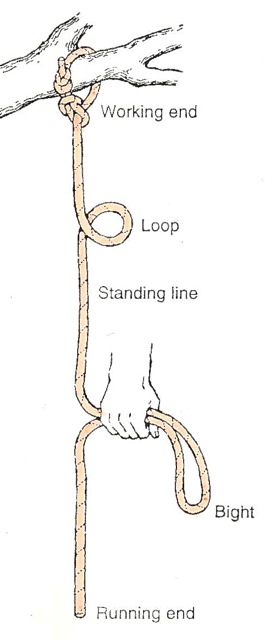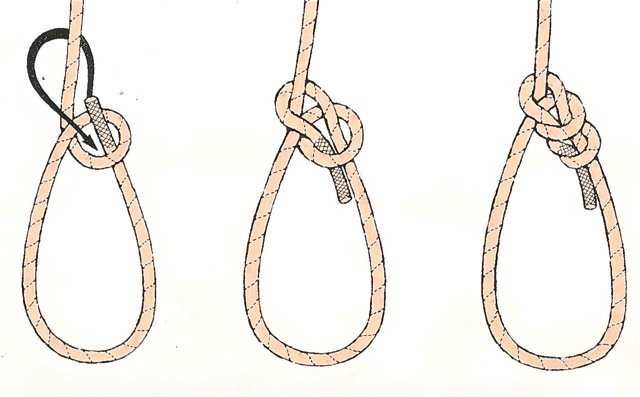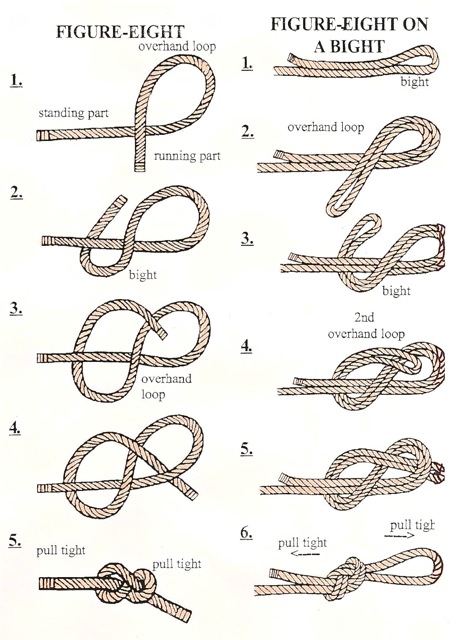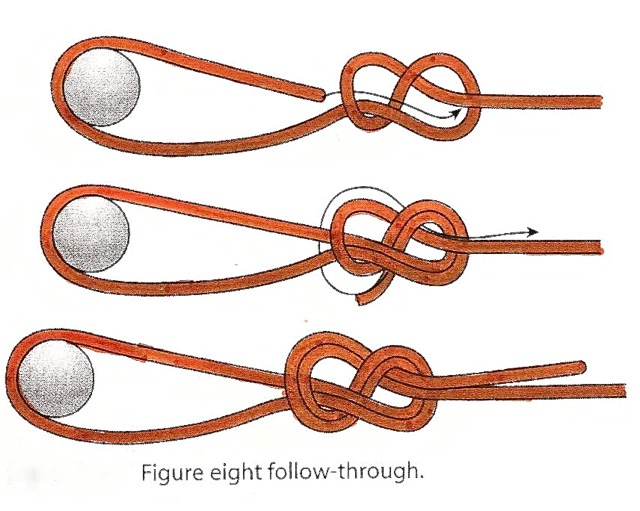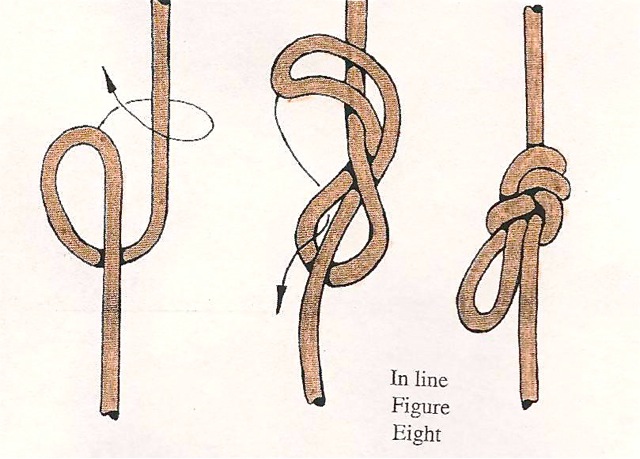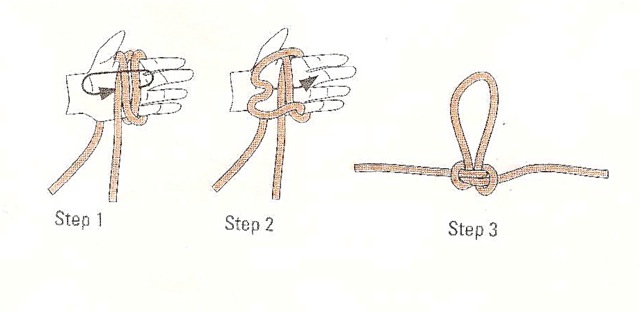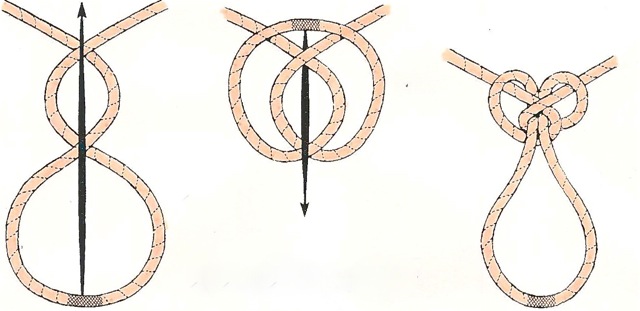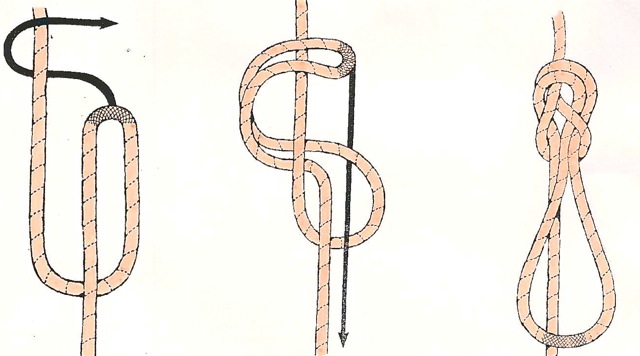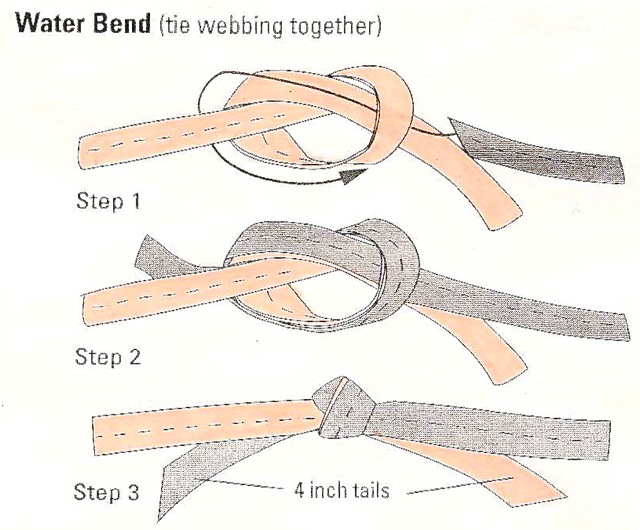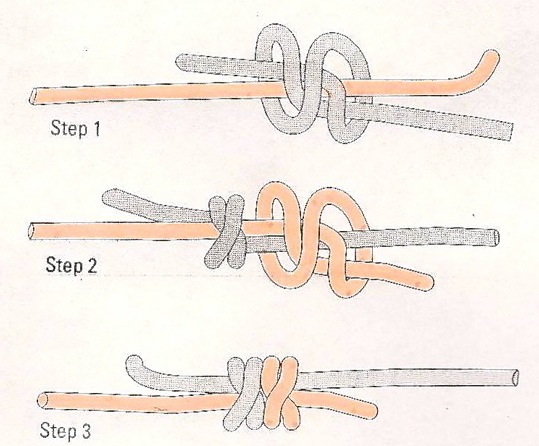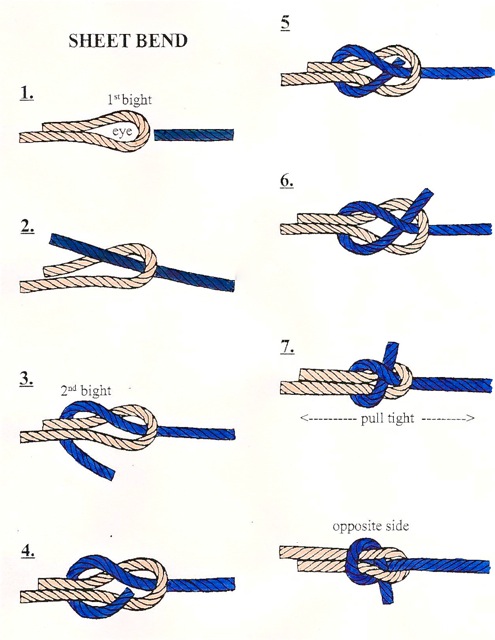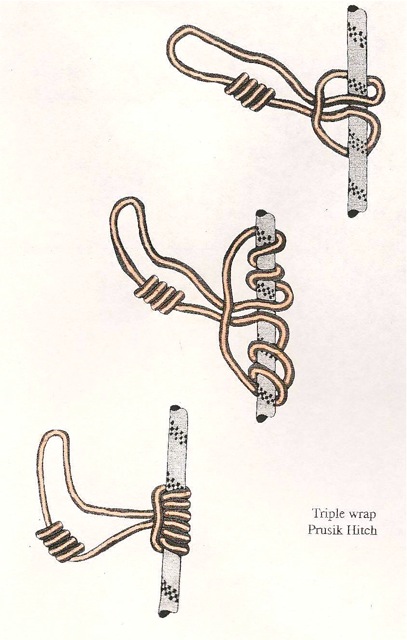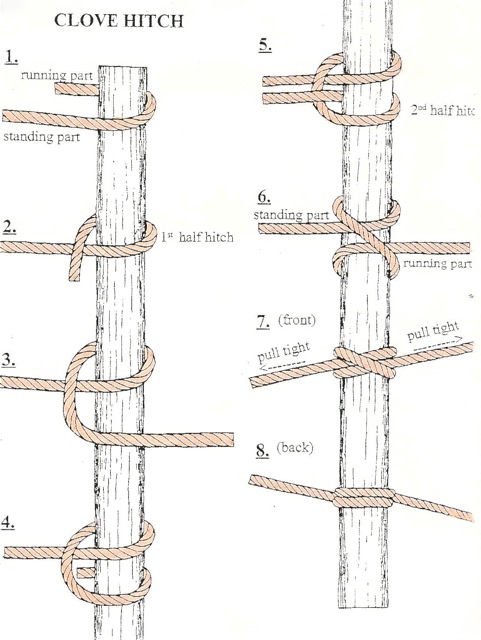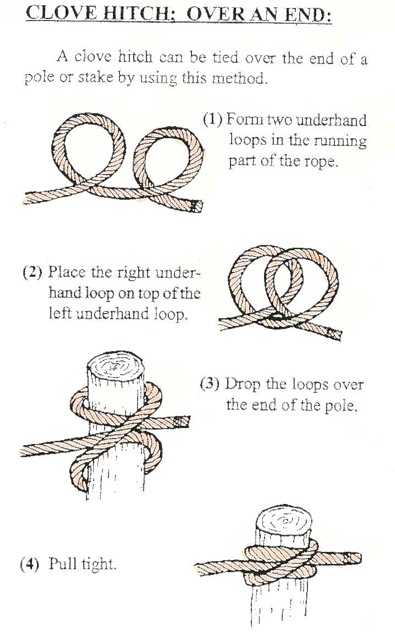|
Rescue Knots, Hitches, and Bends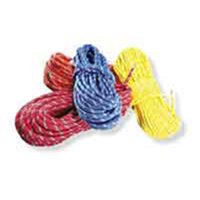
Rescue Knots, Hitches, and Bends After the rope has been attached to it's anchor by the rigger, it should be closely examined by each member of the party before use. After all, it is a critical link upon which lives will depend. A skillful rigger does not need a vast repertoire of knots or ties. In fact, some say that knowing a Bowline and a Figure Eight , and all their variations, can accomplish all the needs in rope work. Knowing a few ties and knowing them well is far better than being familiar with dozens of ties about which one feels only vaguely comfortable. Ties are essential to a successful rigging. They should be as simple to untie as they are to tie, should not be able to work themselves loose, and should be simple, allowing for easy inspection.
The size of the tie is a factor that sometimes becomes an important criterion in selection. A compact tie may be necessary if it has to travel through a pulley or if it becomes necessary to climb or rappel over it. A rope's fibers undergo stress whenever they are bent or twisted. As a general rule, a rope oriented in a straight line will maintain the greatest original strength. Therefor, the sharper the angle at which a rope is bent, the weaker it becomes at that point. Research has shown that ropes really don't break in the tight bends of a tie, rather, ropes and webbing break at a point going into a tie. At this point the tie loops bind down on the incoming rope or webbing and pinch them off to the point of failure. Even a Prusik Hitch under great tension, pinches a rope so tightly that it actually melts the main rope apart. Tie Efficiency Sometimes tie efficiency may be sacrificed for the priority of "compactness." These tie trade-offs are the rigger's responsibility. Finishing
Dressing 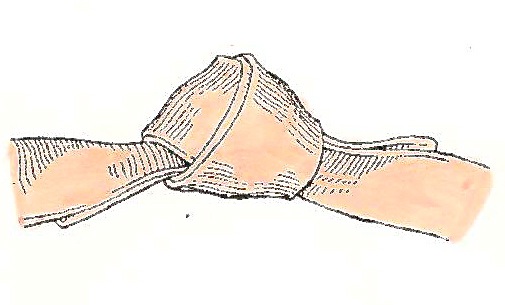
Setting Knot - A fixed, non-movable place on a piece of cordage that is achieved through turns, bends, and tie-offs. Hitch - A group of ties that wrap or attach to other objects or ropes. Almost always, when the object is removed, the tie will fall apart. Bend - A tie that unites two rope ends. Bight - A doubled section of rope, usually taken from the center of the rope, that does not cross itself. loop - A turn of the rope that crosses itself. Running End The end that is not rigged or the free end Standing Part of the Rope - All of the rope that is not fastened at the rigging point The Working End - The end that is used to rig with or tie off to something.
|
